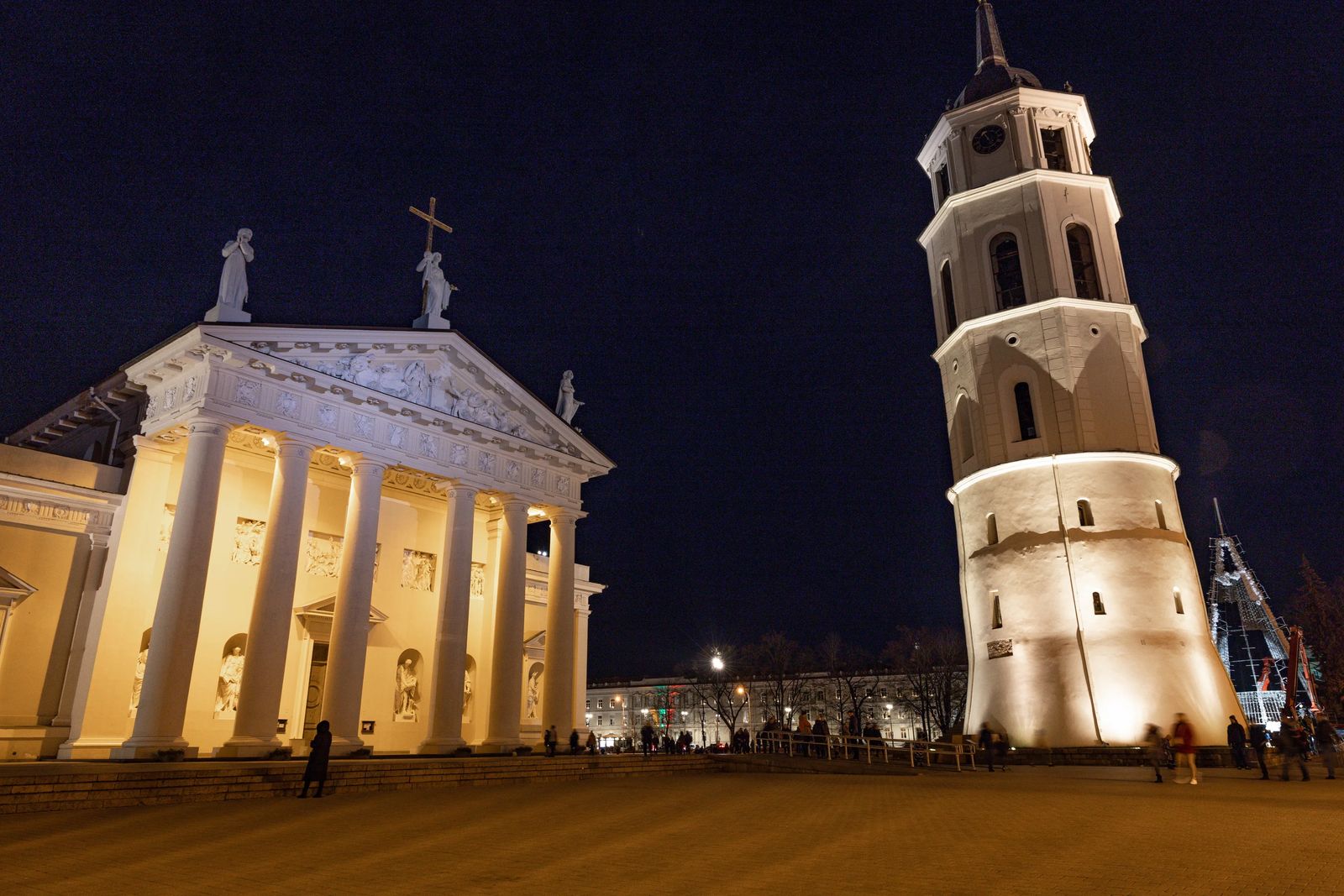
Vilnius Cathedral and Crypts, Is it worth it?
Vilnius Old Town is considered a UNESCO site, and the Vilnius Cathedral is the center of the crown of Old Town. What you may not have known is that there are crypts of the Lithuanian rulers that were buried underneath the cathedral that were just recently discovered in 1984. Much of Lithuanian history was stolen, moved or lost because of the Soviet rule here, so the fact that these survived detection is quite remarkable. Let's go explore the cathedral and crypts, search for the Shroud of Turin, and hear tales of poison, mystery, and flooding mayhem.

Quick Facts About Vilnius
Location: Capital of Lithuania, and right above Poland and Belarus.
Transportation: Bolt is very cheap and is like their Uber, but also have Uber and Taxis available.
How Long To Stay: You need a minimum of 4 days in Vilnius to REALLY explore everything, some tours are only available on certain days, and tours can require special permission.
Best Things To Do: Old Town, Užupis, Vilnius Cathedral, Gaedameis Tower, Museums, food and more.
What To Eat: Potatoes are the national dish in Lithuania, so yes there is lots of meat and potatoes cooked all different ways. HOWEVER, I loved how they really put a lot of emphasis on vegetables and their drinks are REALLY STRONG - so consider yourself warned.
Money Recommendations: When visiting there were very few places that didn't take my Chase Sapphire Preferred card, but a few that did prefer the cash, so make sure to carry about 50 Euros on you for tips and just in case.
Do they speak English in Vilnius? They speak Lithuanian, Russian, and many understand little bits of English enough to communicate the important stuff.
Is Vilnius Safe? Yes, it is a very safe city with an overall risk rating of low. HOWEVER, I am a plus size woman and didn't see very many other plus size people there. No one said ANYTHING to me, other than curious looks, and I don't know if that was because of my size, or carrying a camera. A friend that is studying there also said that there are several bars in town that do not let his Black friend from London into Bars there even though he is stationed at the base there. Sooooo, I'm not calling anyone out, but it is just some observations I had on my very first day there. For the LGBTQ community, I would advise caution, the more north you go towards Finland, the more progressive the Baltics get. I did not see any rainbow flags flying anywhere.
Pin it to read later! Sharing is caring ;)
.jpg?fit=outside&w=1600&h=2399)
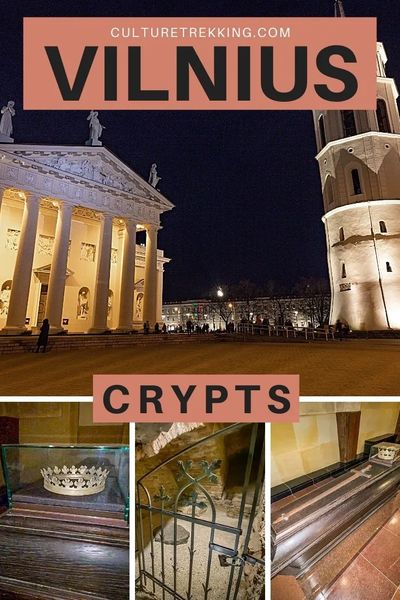.jpg?fit=outside&w=1600&h=2399)
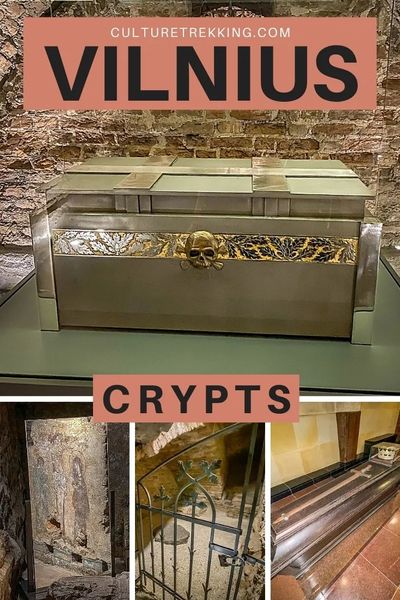.jpg?fit=outside&w=1600&h=2399)
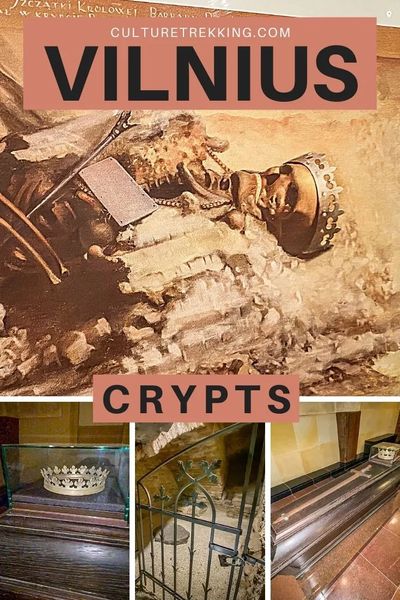.jpg?fit=outside&w=1600&h=2399)
.jpg?fit=outside&w=1600&h=2399)
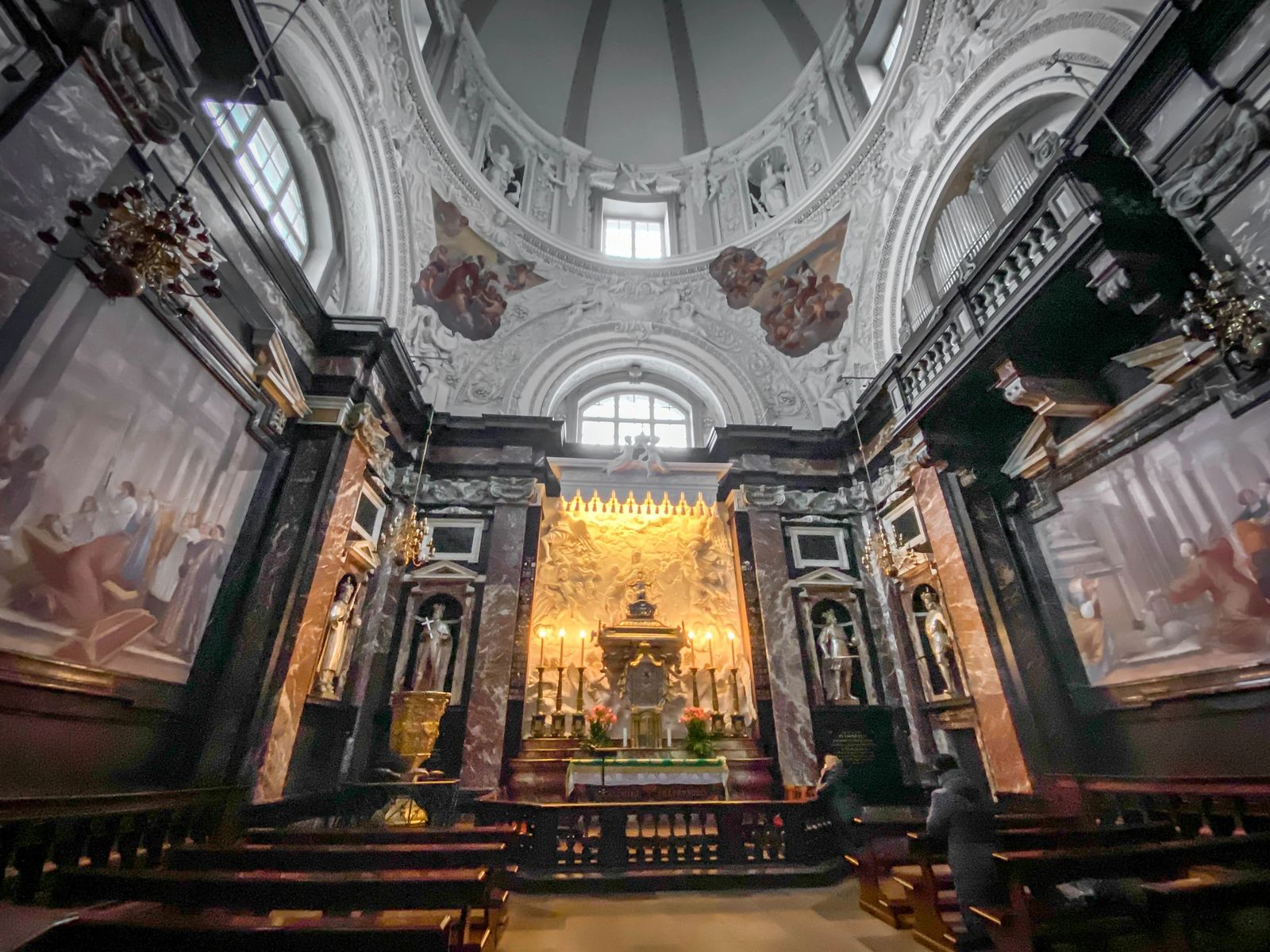
The Start Of Christianity In Europe
King Mindaugas was the only official King of Lithuania, as many of the 'rulers' were actually considered Grand Dukes rather than kings. The reason he is important in this story is that he was baptized in 1251 as a Roman Catholic, being the last Pagan state in Europe to adopt Christianity. This alliance with the Catholic church obviously did bring power, by creating an alliance with the Livonian Order, who were always antagonizing Lithuanians before.
There is no actual proof of this, but many believe that Kind Mindaugas built the first wooden church structure right on this very spot that Vilnius Cathedral resides. There are hints from artifacts that it was built right over a Pagan temple to the God Perkūnas, the God of Thunder.
While Paganism isn't widely practiced here, there still are very much remnants of the Pagan past in modern day Lithuania. Especially since religion was outlawed for a long period of time during the Soviet Occupation, but let's not get ahead of ourselves on that note.

14th-15th Century
The history of this place actually begins here in 14th century. You see, after King Mindaugas died, it was turned back into a Pagan temple, then turned back into a Christian church in 1387 when Lithuania officially became a Christian per Grand Duke Vytautas orders.
It was after the fire in 1419, Grand Duke Vytautas had the cathedral rebuilt as a beautiful Gothic Cathedral (similar to the Frombork Cathedral in Prussia with its facade and two towers of different heights).
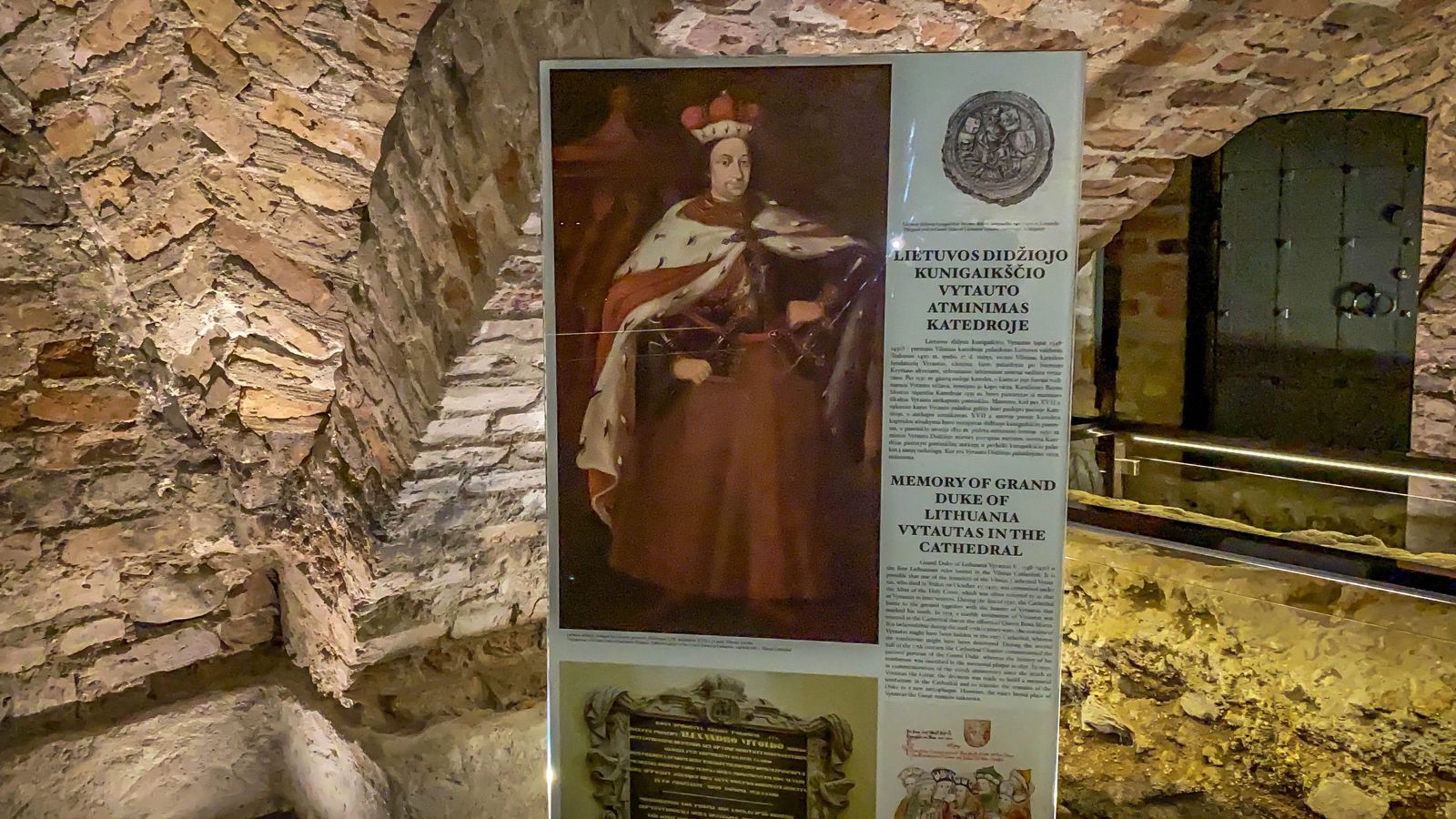
At the same time Grand Duke Vytautas built the first brick castle in 1409, and two defensive towers that were connected to the defensive walls, and the tower outside the cathedral was connected to those walls as well. One of the defensive towers still stands today, that is Gediminas Castle Tower.
The Cathedral endured lots of fires, , coronations, more fires, renovations, another fire and more rebuilding. It was during 1534-1557 that the chapels and crypts were finally added.
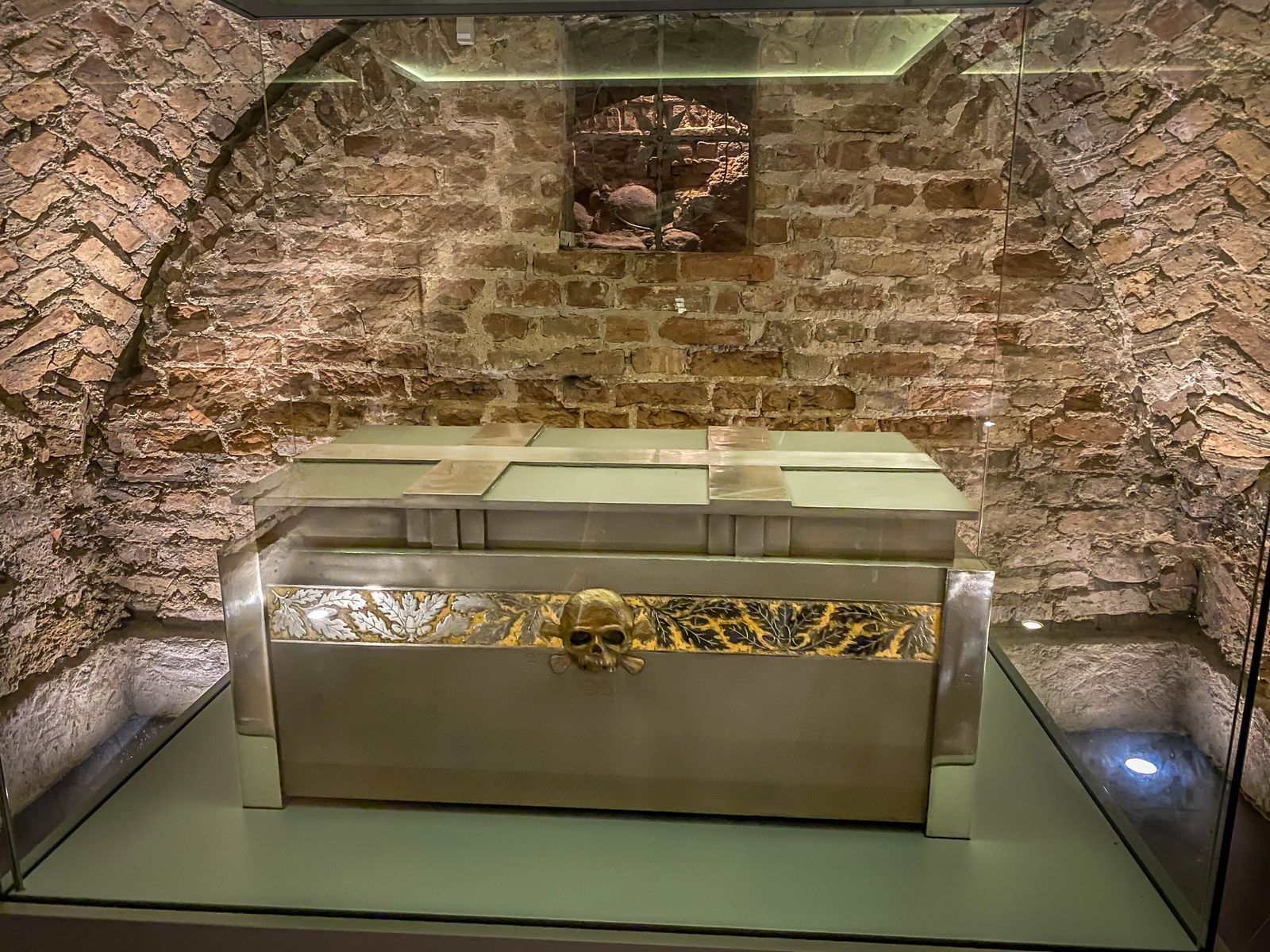
The Lithuanian people have found good evidence to believing that Vytautus is buried in these crypts. There are 27 crypts and they have only explored 20 of them so far. They will be exploring the remaining crypts within the next few years (2022-2024) and are still hoping to find the remains of King Vytautus.
Unfortunately, until the building was stabilized in the 1930s the river would often flood, and water would seep into these crypts the wooden coffins were disintegrated. The coat of arms of several of the Royals survived as well as crowns and swords that top the remade wooden coffins as well.
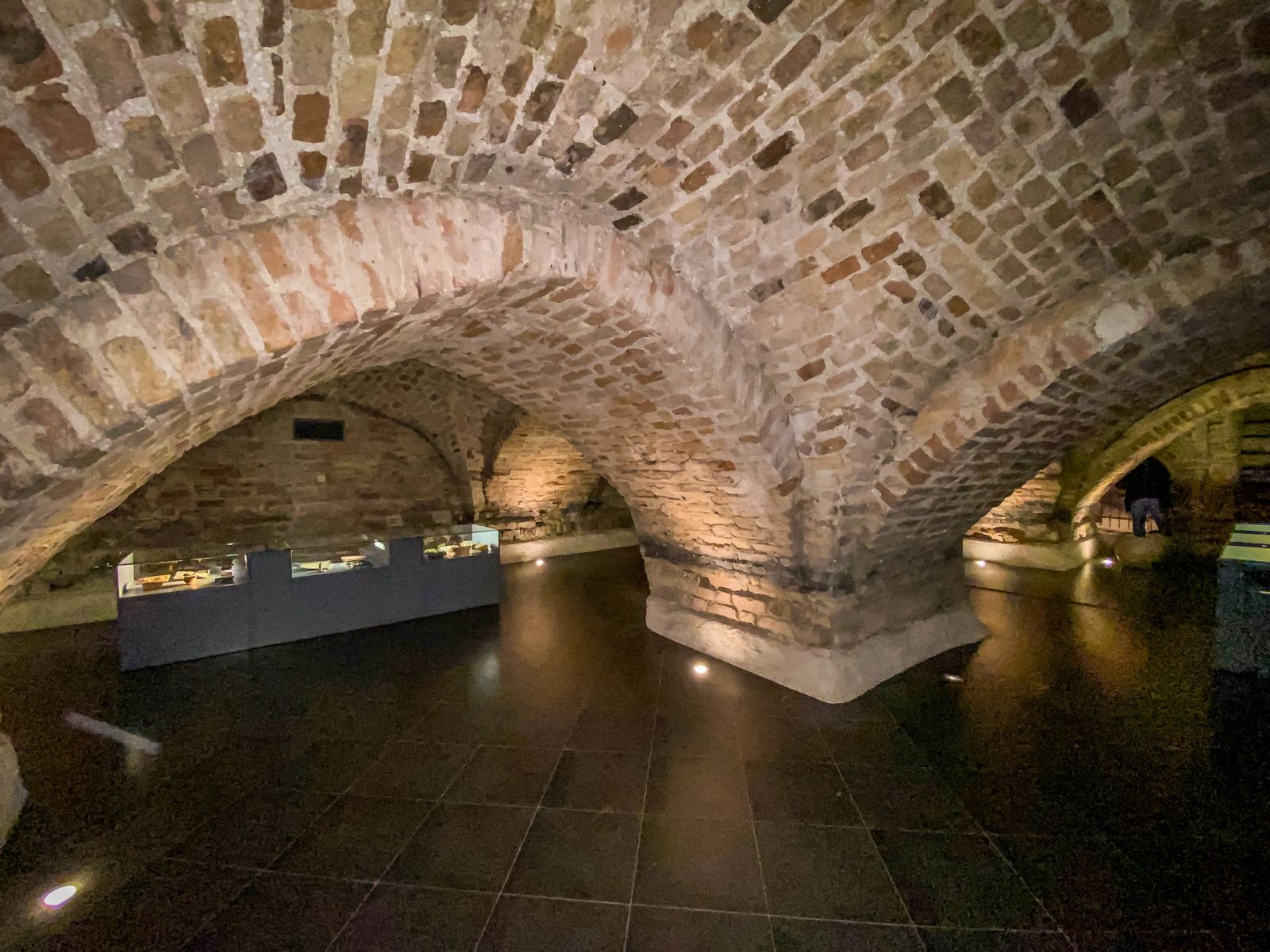
16th century
St. Casimir is the patron saint of Lithuania, and has a STUNNING Baroque chapel located inside this cathedral I highly suggest checking out in the daylight. If you look closely at the painting of St Casimir you will notice that the saint has three hands.
Why three hands? Well the painter that painted it kept trying to cover up the third hand that is further from the Saints heart, it kept reappearing after two or three attempts so he just left it. To this day the painting is said to be a miraculous one.

From 17th Century To 19th Century
In 1769 the south tower was severely damaged in a storm killing six people, and was soon rebuilt after. Vilnius Cathedral went through several more changes and transformations until 1801 when its outer appearance still looks the same as it does today.
Outside the cathedral you will see the Neoclassical style with four Evangelists. The saints on the top of the cathedral are Saint Casimir on the south side (representing Lithuania), Saint Stanislaus on the north side (representing Poland), and Saint Helena in the middle (representing the true cross) and were placed here in about 1786-1792, but were removed during the Soviet Occupation.

The Soviet Occupation And Religious Oppression
The Vilnius Cathedral closed from 1949 to 1988 during the Soviet Occupation of Lithuania. The Soviets turned it into a warehouse and the crypts here were never detected as they had been bricked up prior to their occupation.
Many of the items that the Soviet Union had taken from the Cathedral were lost, however, the historical items here remained so it is a great source of pride for the Lithuanian people. Religion was banned during the Soviet Era. When 1988 came around the Soviet Occupation was coming to an end (1990) and the church was restored to the people, the joy of being able to freely worship was restored.
It is sobering and sad to hear of people in our lifetime who lost parents during battles for freedom from oppression. It was a way of life for them, each day was not taken for granted because you could be caught or go missing. So to me, helping put money into restoring the crypts, and donating something to help the cause is extremely important.
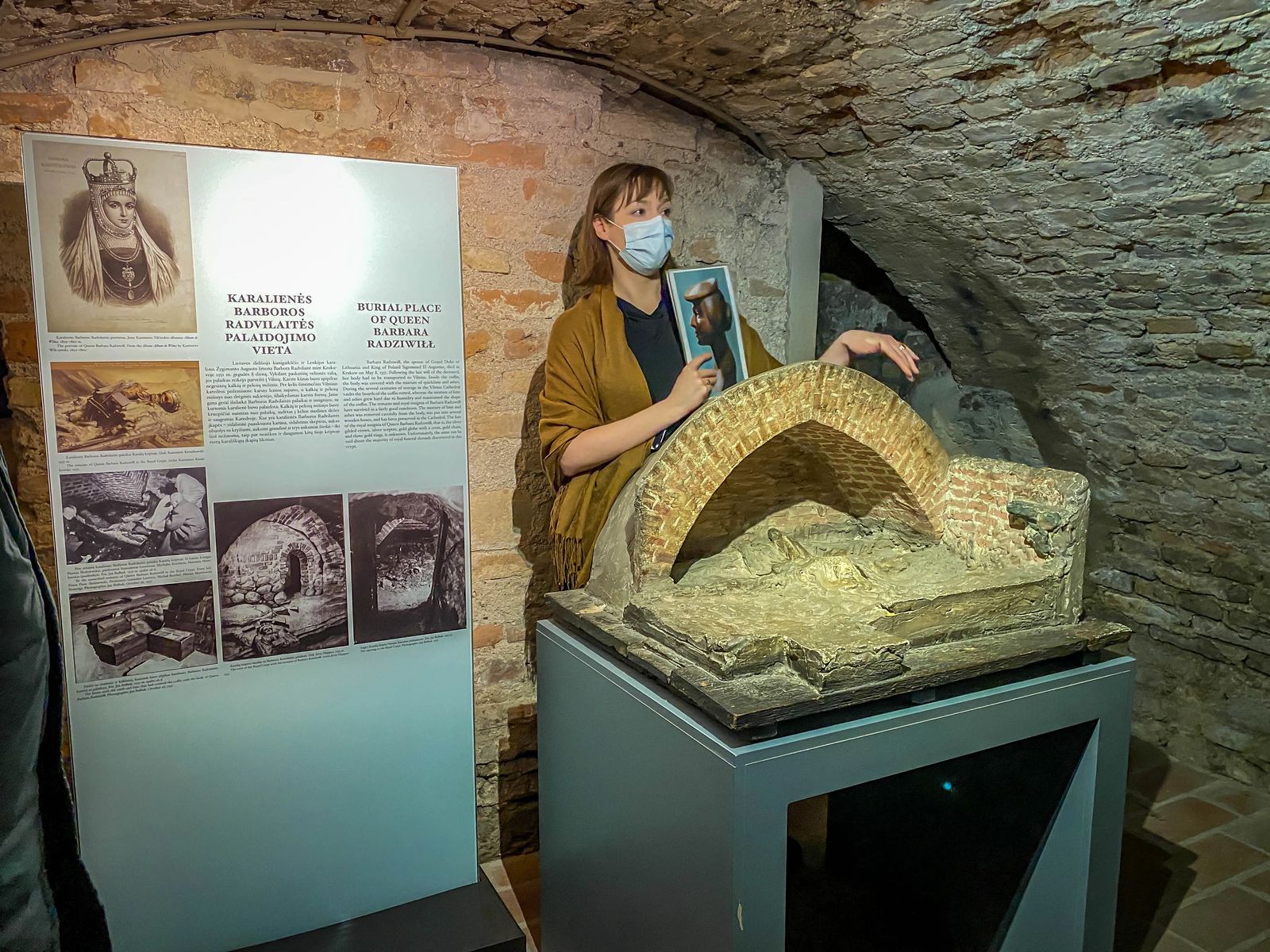
If you watch my Youtube video above, it will tell more details of the state of the crypts, the tales of love, loss, mystery, poison, and tragedy turned into treasure. Learn about the Romeo and Juliet story of love, and more.

Restoration & Exploration of Vilnius Crypts
After the Soviet Occupation ended, the Saints were returned to the top of the facade where you can still see them today.
The restoration of the crypts has been painstaking, and even the smallest remnant of the Lithuanian history is cherished, because much of it was wiped out during the Soviet Occupation. Lithuanians are a very resilient people, and take pride in anything they can to help restore their identity.
Take for instance this eraser sized angel holding a coat of arms (pictured above). It was found among the crypts remnants and is believed to have been part of a more decorated Sarcophagi that floats above its head.
Each time someone visits the crypts it allows more money to go into restoring what was once lost, and still lost. I am very excited to see what they find in the remaining crypts in the next few years, and for their own sake, that they are finally able to find the remains of King Vytautus and finally lay him to rest in his sarcophagus.
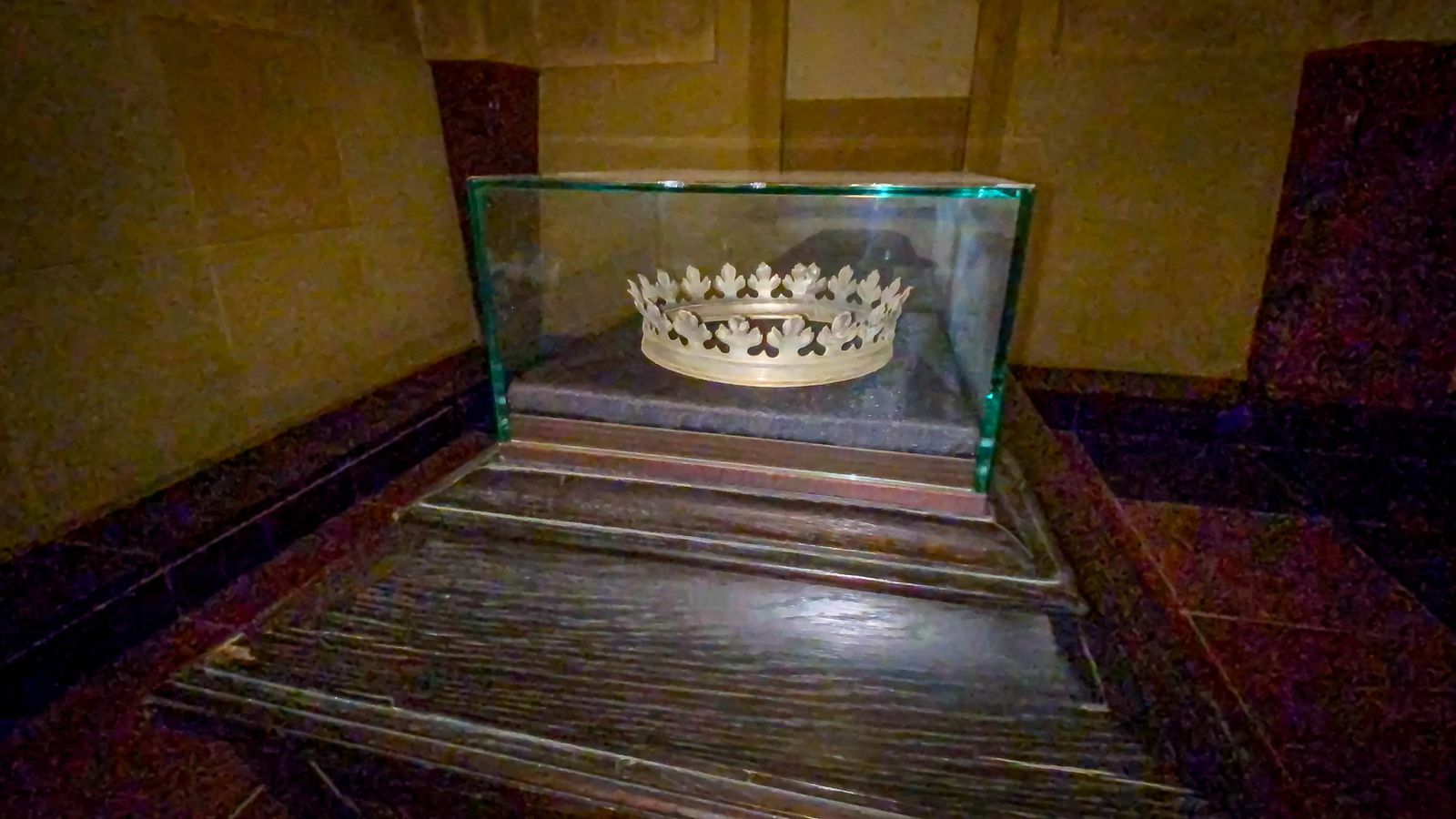
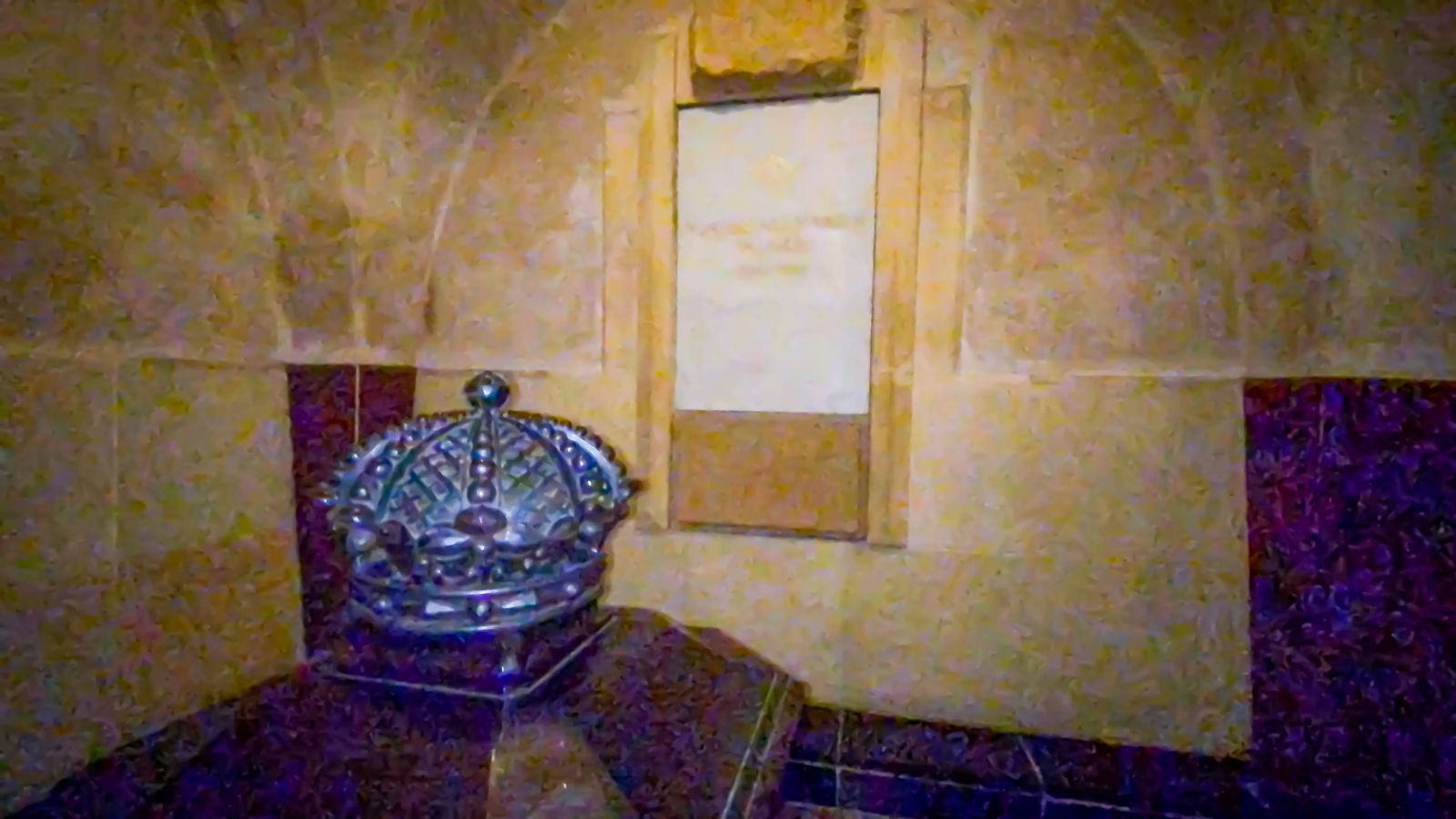

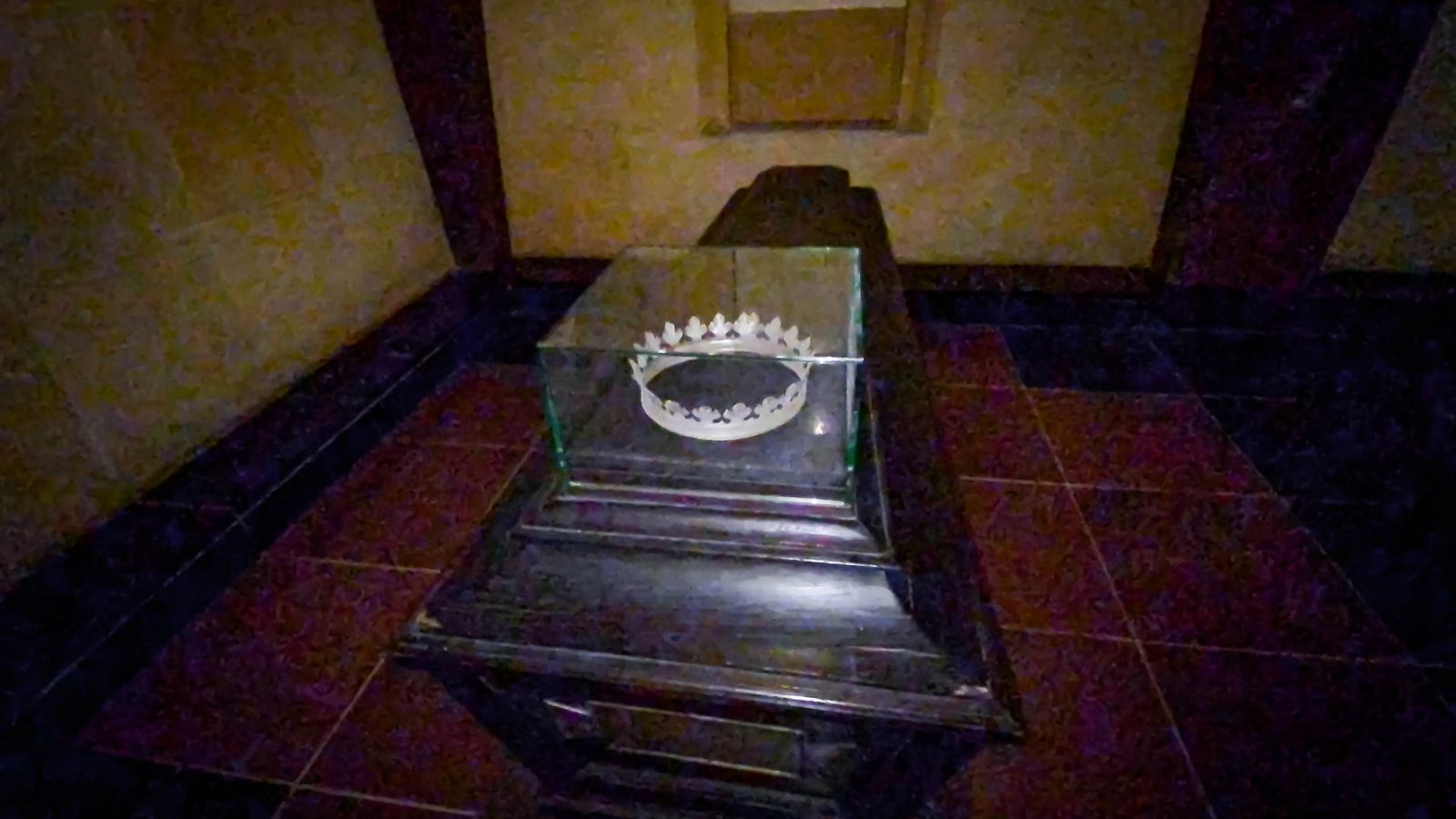
Crypts of Vilnius Cathedral
So if you skipped to this part, you may not get the full picture of WHY the Vilnius Cathedral is so important to the Lithuanian people. However, if you stuck with me through the article, then I hope you understand why I feel that visiting the Crypts of Vilnius Cathedral are worth it.
It is only 6 euro to get in, and every time we pay or donate to visit the crypts, it allows the Lithuanian people to reclaim some of their past that was nearly wiped out during the Soviet Era. The more tourism dollars that are brought in, the better able the country is to maintain its boundaries.
Independent of helping the Lithuanian people, I still feel the crypts are worth visiting. The slide show in the beginning is very informative and is a great starting point when visiting Lithuania. It goes through the religious history of the country, the important kings and rulers of this beautiful country, then dives into the dark past.
After the slide show, you are taken to the crypts were the royals were buried and learn about Barbara the Grand Duchess of Lithuania and also part of the Hapsburg Empire that married Grand Duke Sigmund Augustus in the 15th century.
His mother vehemently opposed the marriage, and it was five months after her coronation that she died at the age of 31. Her mother thought that Agustus mother poisoned Barbara, but since they were able to find the remains of Barbara - they found she died from Ovarian Cancer.

Their tale of true love, a Romeo and Juliet type story because of two great empires marrying for love and not for political gain is one that reverberates through every classroom in Lithuania.
Sigismund II Augustus first wife was Elizabeth of Austria and she died at the age of eighteen. The second wife, Barbara Radziwill (the famous one) was the most scandalous and the royal court disapproved of it entirely.
Why? Firstly because Sigismund was having affairs with her while he was still married to Elizabeth, and secondly because his mother HATED the Haspbergs (of which Barbara was a part of) and had plotted most of her life to oppose them. Then as most children do, they piss their parents off by doing the exact opposite of what they want.
Barbara was said to be quite beautiful because she had all her teeth and they were all white. So what does ANY of this have to do with the Crypts? Well they found the skull of Barbara, and she indeed had all of her teeth, they were all white - even after all these years.
The third wife of Augustus Catherine of Austria, was allegedly was his first cousin. The marriage was completely political, she was said to be boring and obese and she isn't even buried in Lithuania and they never had children, soooooo I think we will leave that there.
Unfortunately for Sigismund II Augustus his sister Anna died in 1596, and when his life ended in 1572 at the age of 51 the Jagiellonian dynasty came to an end.

Tips and Travel Hacks for Visiting Vilnius Cathedral
English tours are only on Tuesday, Thursday and Saturday at 4pm, the tickets are limited so make sure you buy them as soon as you get there. I personally didn't see anywhere online you could purchase them in advance, if you do find that, please leave the link in the comments below to help the rest of the community out.
It is very dark in the cathedral in the evenings, so I would visit the upper cathedral during the day. If it is hot out, the crypts are a good place to visit because it is cool down there.
Flash and tripods are not permitted down in the crypts, and I would even suggest not bringing a backpack because it can get pretty tight around the corners.
There is one portion that if you are claustrophobic I would not suggest going into, it is the small entrance you have to duck down quite a bit to get into. This area is where some of the bodies were actually buried and you see the iron and cement pylons that were placed some 10 m (32.81 feet) deep in order to stabilize the building. Other than that, you don't need to necessarily go into that room.
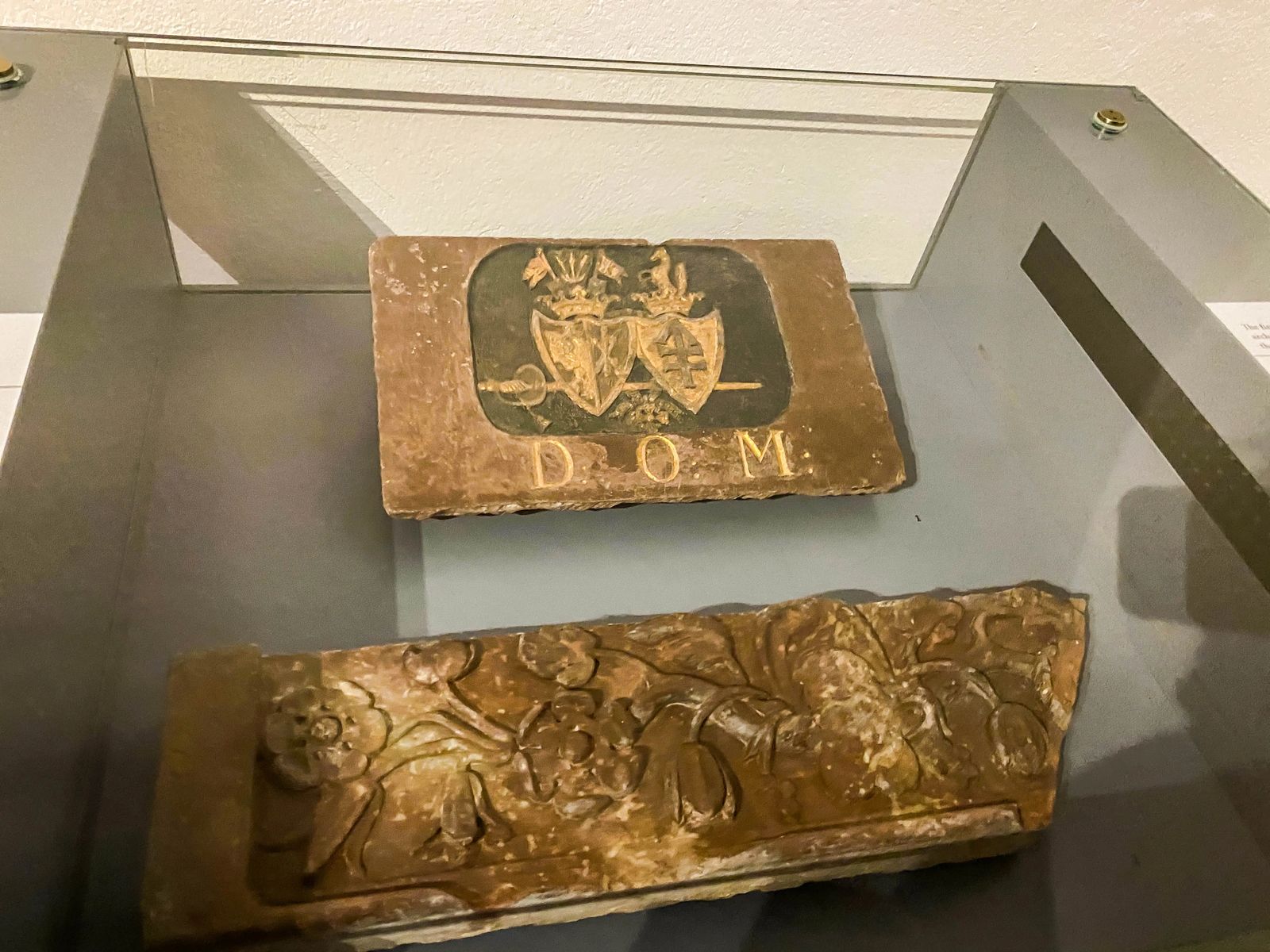
Takeaway for Visiting Vilnius Crypts
Taking in all the history and the things you are able to see in the crypts, the guide and all the history given during the tour with such a small group - I would certainly say that the tour of the Vilnius Cathedral Crypts is definitely worth it.
I personally was only in Vilnius for 48 hours and thought that going to the crypts for the hour tour was well worth the time. I am a history nerd though, and have a slight obsession with medieval times and how things worked and people survived back then. If you could care less about history, well....I think you clicked on the wrong article - LOL.
Best of luck to you on your trip and if you have any more specific questions feel free to leave them in the comments down below. Cheers until next time.
Latest Articles On Culture Trekking


Welcome to Culture Trekking!
My name is Janiel, I specialize in solo female travel, cultural connections, sustainable adventures, food and history to help make your travel experiences fun, meaningful, and delicious. My experience in travel, and my personal story have allowed me to get published in Fodor's Travel, Atlas Obscura, Metro.co.uk, Trip Advisor, and multiple Podcast interviews. You can find me on pretty much every social media channel YouTube, Instagram, Twitter, Facebook, Pinterest, TikTok. To read more about me and my story click here. If you are a brand and would like to work with me, click here.














